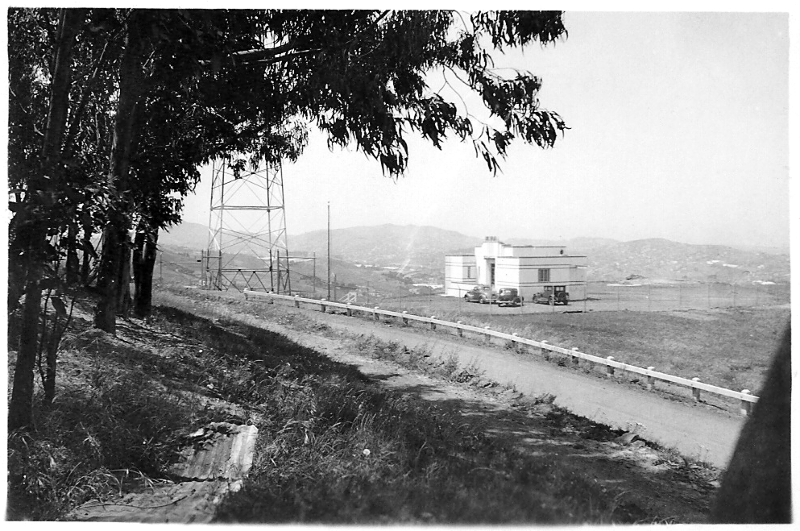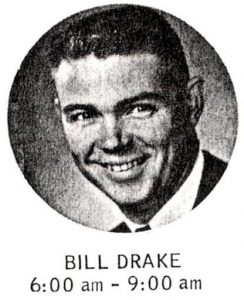

The History Of
KYA Radio, San Francisco
By John Schneider

Many efforts were made to establish coast-to-coast networks to compete with NBC and CBS. Many of those fledgling networks found their efforts dashed by the unforeseeable effects of the great depression.
One such network that started out with great plans but ended in bankruptcy was the Pacific Broadcasting Company. This was a Seattle-based company that owned and operated KJR in that city, and had plans to build a West Coast network of super-stations. Vincent Kraft, who was the founder and manager of KJR, was President of the new company. The plans called for stations in Seattle, Spokane, Portland, San Francisco and Los Angeles.
December 18, 1926, was the first day of the planned expansion beyond Seattle. On that date, the network’s San Francisco outlet, KYA, went on the air. KYA broadcast initially on 970 kc. with 500 watts, but it was planned to later increase its power to 20,000 watts. On Christmas day, the network’s two other Northwest outlets, KEX in Portland and KGA in Spokane, went on the air, each with 20,000 watts. The Los Angeles outlet, KPLA, came on the air within the next several months. A postal loop hookup was established between KYA and KPLA, and the two stations exchanged sponsored programs on a regular basis.
KYA’s first facilities were located in the Clift Hotel in San Francisco. The studio was located on the fifth floor, and the transmitter was on the sixteenth floor with the antenna on the roof. Claire Morrison, KPO engineer and announcer, was hired as Manager, and Edward Ludes of KJBS was Chief Announcer. The station changed frequencies several times during the next two years, operating with 1,000 Watts first on 850 and later on 830 kc.
KYA and the Pacific Broadcasting Company had financial problems from the outset. Within a year, the company joined forces with the West Coast Theatres and a new network was formed, the first of a number to take the name American Broadcasting Company (ABC), headquartered in Seattle.
On December 3, 1927, the station moved into its new studios in Loew’s Warfield Theater, 988 Market Street. The hope was that the merger with the vaudeville theater chain would provide the network with entertainment for its broadcasts, and with studios in the Warfield, the performers had only to walk down to the basement studios to broadcast a network program. An agreement was made with the San Francisco Examiner that provided for the exchange of news bulletins and publicity, and KYA became the Examiner station. The new basement studios were elaborate and well-decorated, designed to be a showplace for theater-goers that might wander down the staircase before a performance.
On alternate nights, KYA supplied nearly all the ABC network’s programming, and originated some programs for CBS when its local station KFRC had a conflict — specifically the East-West Football Game and the “Old Gold” program.
In a massive nationwide reassignment of frequencies which took place November 11, 1928, KYA was ordered to the less desirable frequency of 1230 kc., perhaps due to a failure to build the high powered facility first proposed. (The station moved again in 1941 in another wholesale frequency shift, this time to 1260 kc.)
A short period of rapid expansion followed, and the ABC network was quickly being built into a coast-to-coast network, under the command of Seattle banker Adolph Linden. But everything fell apart overnight in 1929, right after the stock market crash, when Linden was arrested for embezzling his bank’s funds to bankroll the network.
The ABC network went into receivership and became the Northwest Broadcasting System under the control of receiver H. I. Pierce. KPLA in Los Angeles was sold to Earl C. Anthony, and it became KECA. KYA was operated by F. C. Dahlquist under receivership until the entire ABC operation was purchased by the National Broadcasting Company in 1930. At that time, KJR, KEX and KGA became the NBC Blue Network stations in their respective cities. KYA became the key station for a minor NBC hookup that was called the “Brown Network,” which was eventually dissolved.
NBC’s acquisition of KYA allowed the purchase a state of the art RCA 1B screen-grid transmitter. The “Greater KYA” debuted with its new transmitter from its new location at the Hotel Whitcomb on June 25, 1930.
KYA was never a good fit with the NBC organization, which desired to operate a pair of stations in each major city to transmit its Red and Blue networks. But in San Francisco, they had three stations — KPO, KGO and KYA — and KYA was the odd man out. So KYA was sold once again, to the Hearst Publishing Company in 1934, and it and became the full-time radio voice of the San Francisco Examiner. The station was immediately moved into new facilities in the Hearst Building, at Third and Market Streets, where three well-equipped studios were constructed. The station’s program policy was to be a reflection in sound of the Examiner‘s editorial pages, and it remained so until 1948.
On June 1,1937, KYA began transmitting with increased power from their new transmitter site on Candlestick Hill, overlooking the Hunter’s Point District of the city. A modern art deco transmitter building was constructed on the top of the hill, and a new RCA 5-C 5,000 Watt transmitter was installed. A new self-supporting 450 foot radio tower completed the installation.
In 1948, the Examiner sold KYA to a group of Stanford professors and instructors, doing business as “Palo Alto Radio Station, Inc.” This started a turbulent period in the history of KYA. Over a period of almost twenty years, KYA was operated by no less than eight different owners!
The Palo Alto group sold the station to Dorothy Schiff of the New York Post.

In the mid-fifties, the station was purchased by Elroy McCaw and John Keating, doing business as KYA, Inc. They in turn sold the station to the Bartell Family Group in 1958, who subsequently sold to Golden State Broadcasters.
From 1963 to 1966, KYA was operated by the Churchill Broadcasting Corporation, and in June of 1966 KYA was acquired by AVCO Broadcasting.
Rock’n’roll music made its first appearance on KYA during the Bartell Group days, and then for only a portion of the station’s broadcast day. After an initial success, it quickly took over the entire day’s schedule.
In 1961, a young unknown Georgia disk jockey who called himself Bill Drake was given the task of programming the station. Drake made drastic changes, streamlining the carnival sound of early rock radio, until an entirely new concept was developed.
“The Drake Sound” became an instant success at KYA, and soon spread to other stations. Before long, Bill Drake had redefined rock’n’roll radio nationwide, which became “Top 40” radio. Drake became a multi-millionaire, programming nearly a hundred AM and FM stations from his home in Bel Air in the 1970s. KYA and KFRC shared the important rock radio audience in San Francisco through the ’70s.
In 1983, Bonneville Broadcasting Co. purchased KYA and the call letters were changed to KOIT. The original call letters lived on, however, with KYA-FM, which was sold to another owner, KING Broadcasting of Seattle, which operated it together with KSFO. Two of San Francisco’s most historic call letters were now resided under one roof.
REFERENCES:
“San Francisco Examiner,” December 16, 1926.
“San Francisco Examiner,” December 2, 1927.
“San Francisco Examiner,” December 3, 1927.
“Broadcast Weekly,” 1929.
KYA historical notes by staff member Price Williams, November 15, 1937.
Interview between author and Carl Christiensen, former KYA engineer. San Rafael, California, March 25, 1971.
“Puget Sounds,” by David Richardson
The Federal Radio Commission Station List, as authorized on 11/11/1928. With research by Barry Mishkind, 1993-94.
![]()

Did the KYA Tower light up when the SF Giants would win a baseball game?
Yes! On Candlestick Hill. I grew up in the Bayview and we could see it from living room.
If I’m not mistaken, KYA Radio was originally located at The Mark Hopkins Hotel in Nob Hill. I actually met Russ “The Moose” Syracuse there in 1965 while doing a story for my high school newspaper. The Fairmont Hotel housed the KSFO studios and, The Mark Hopkins Hotel housed the KYA studios.
KYA was originally located in the Clift Hotel. Both KYA and KSFO were located in the Mark Hopkins (at #1 Nob Hill Circle) and in the studio annex at The Fairmont – they switched locations in the 1940s.